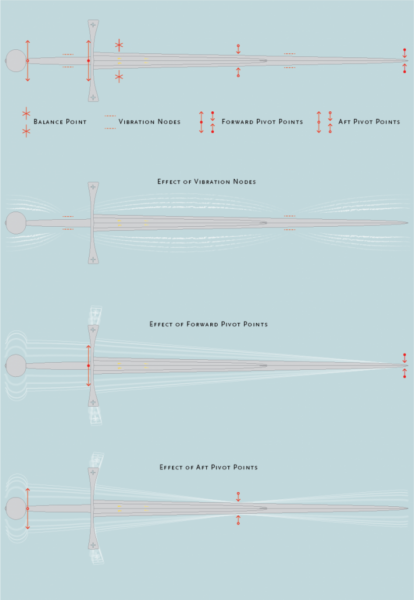In January of 2012 I was given an opportunity to document several swords from the National Museum of Slovenia that was on loan to the Army Museum in Stockholm. One of these is a 15th century long sword of handsome proportions with the inventory number N4516. A rewarding object of study as it is masterfully made and a fine example of ingenious design in the Gothic tradition.
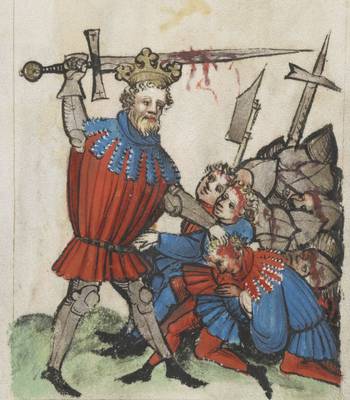
In a manuscript from 1427 we see King David wielding a weapon very similar to n4516.
Manuscript hosted at: Manuscript Miniatures
My task was to document the sword and develop a reproduction of this sword based on measurements and dynamic data, so that a replica could be made for the exhibition “A Knight, a Lady and a Dragon” displayed at the National Museum of Slovenia December 2012 – October 2013. The replica was produced by Albion Armourers.
Function and heft
A versatile long sword like the N4516 was effective in cuts against un-armoured targets and excelled in thrusting. Its sturdy blade is well suited for half-sword techniques against armoured opponents and the massive pommel may be used as a club. The angle of sharpening is some 30 degrees, making for an edge that is both acute and resilient.
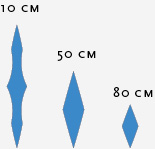
Even with a rather hefty weight of 1650 grams, the N4516 is an supremely agile and responsive weapon as a result of a well adjusted distribution of mass.
Important factors in the function of swords are Pivot Points, Vibration Nodes and Point of Balance. The illustration shows where these are situated in the N4516.
The Point of Balance is where swords balance while stationary. However, swords are designed for motion. How a sword is optimized for a particular style of swordsmanship or fighting technique can be judged by the placing of the Forward and Aft Pivot Points. The forward pivot points helps aiming the blade at the opponent in wards and guards when the hand close to the guard leads in manipulating the sword. When the hand that grasps close to or even overlapping the pommel leads motion, the placing of the aft pivot points can allow the sword to be quickly brought around in preparation for a blow. Different kinds of sword will typically show a different placing of pivot points. This is an important aspect of the balance of swords to make note of for a sword smith.
The Nodes of Vibration, are places where vibrations are cancelled out. This will have an effect on how the sword behaves in contact with other weapons and on impact with targets.
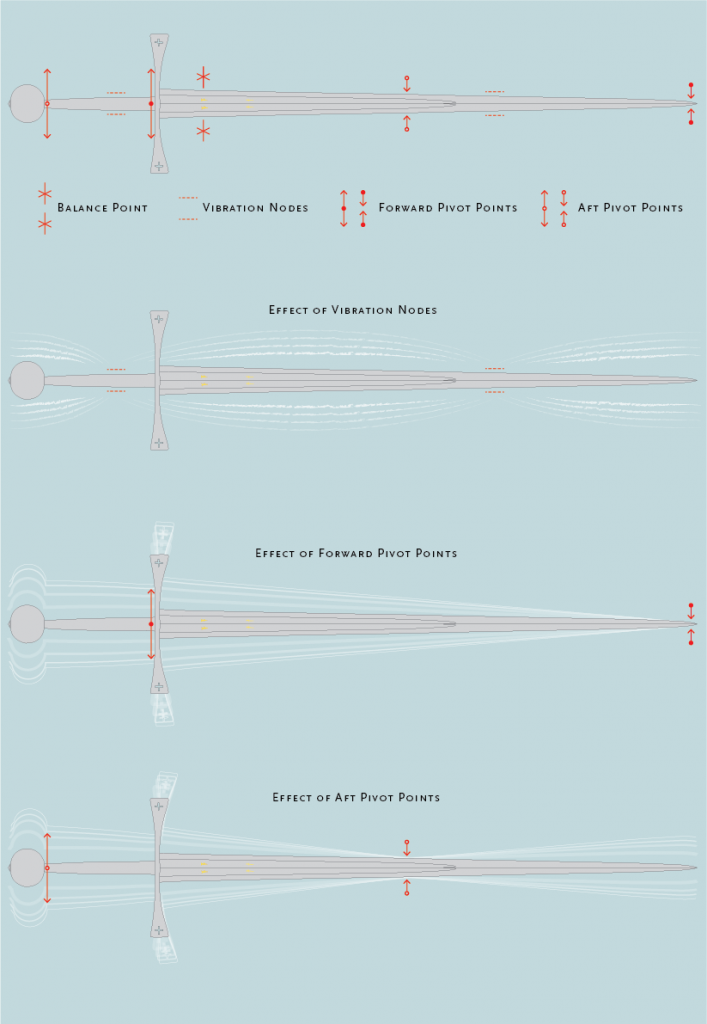
Properties of the proportions
The illustrations below show how geometry may have been used in the design of N4516. The defining elements of the structure; the vesica, the octagon, the rotated and inscribed squares and the interaction between square and circle are all commonly used by medieval architects in the design structure for abbeys and cathedrals.
Blue lines are devices for construction. White lines mark the basic geometry while red lines define the proportions of the sword.
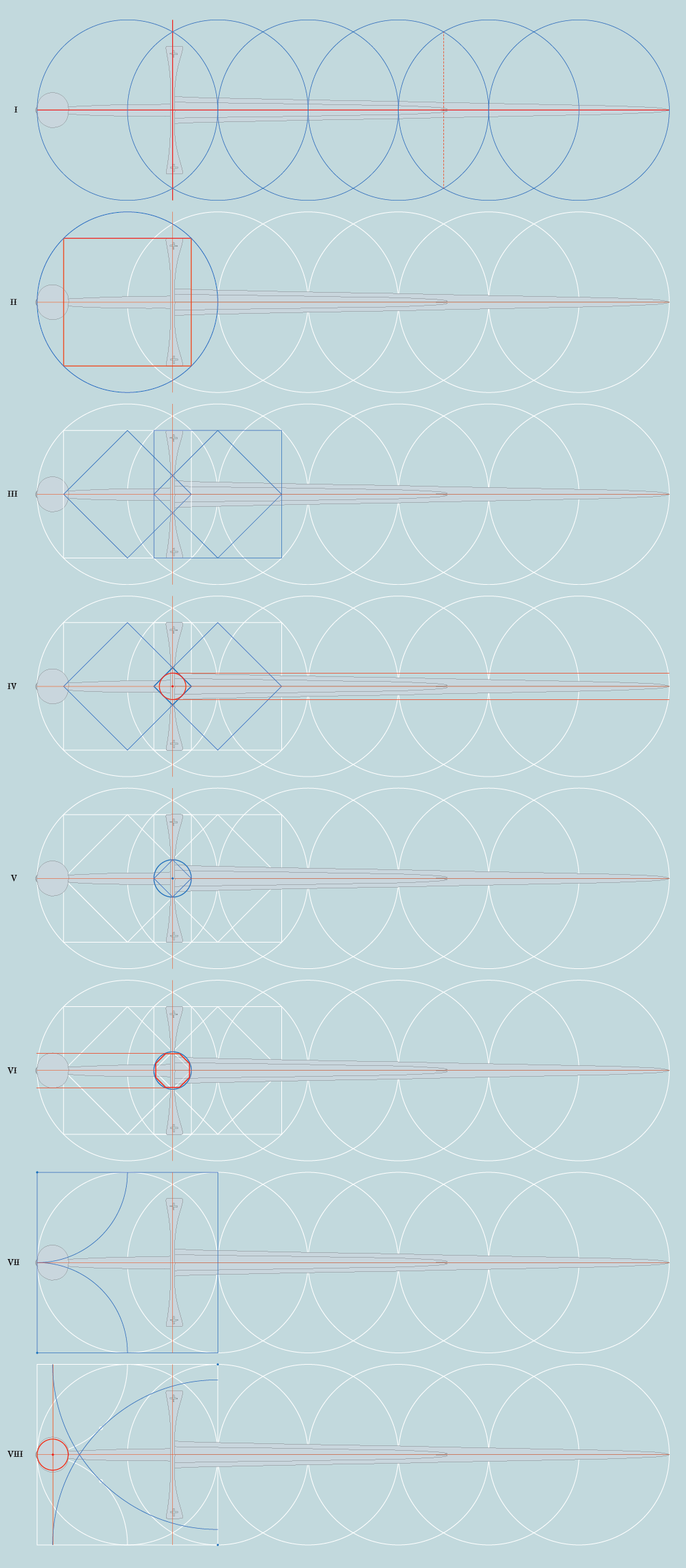
A video showing how the geometry is developed.


